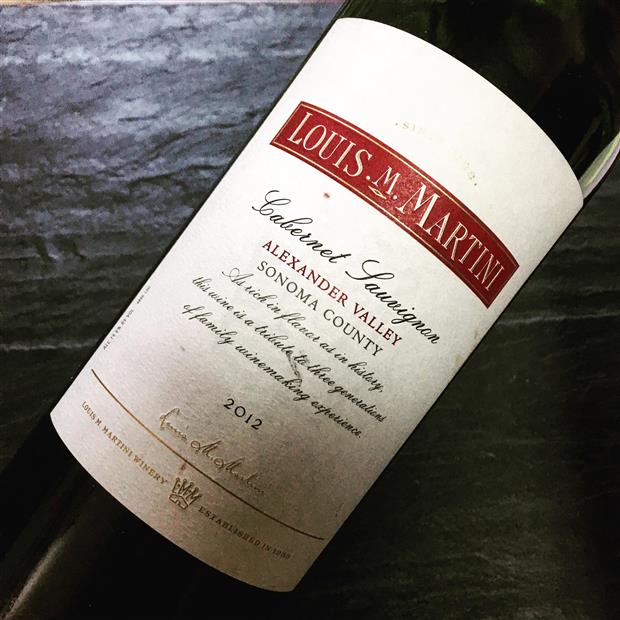
External search
Google (images)
Wine Advocate
Wine Spectator
Burghound
Wine-Searcher
Vintages
2020
2019
2018
2017
2016
2015
2014
2013
2012
2011
2010
2009
2008
2007
2006
2005
2004
2003
2002
2001
Show more
From this producer
Show all wines
All tasting notes
|
| Drinking Windows and Values |
| Drinking window: Drink between 2014 and 2015 (based on 26 user opinions) |
| Community Tasting History |
| Community Tasting Notes (average 87.3 pts. and median of 89 pts. in 34 notes) - hiding notes with no text | | | Tasted by James Kim on 8/29/2019 & rated 85 points: PnP. Aromas of cassis, hint of herbs with some noticeable alcohol. Palate has plush cassis, dark chocolate, hint of menthol. Smooth, creamy mouthfeel with mild tannins. Easy drinking and pleasant and somewhat simple. Some noticeable alcoholic heat on the finish. (1087 views) | | | Tasted by CJM on 3/31/2018 & rated 84 points: Clear deep garnet. tar, cigar box, coffee grinds. Low acids, low tannins. Eucalyptus. Short balanced finish (1542 views) | | | Tasted by Susaninaustin on 4/17/2017: 3 (2068 views) | | | Tasted by Christine Havens on 12/26/2016 & rated 90 points: The profile of the 2012 Louis M. Martini Alexander Valley Cabernet Sauvignon is consistent with the profile of the 2013 I reviewed last spring—how did I manage to get the vintages out of order? No matter, these are wines with great aging potential, they can be squirreled away for a decade or more. Black currants, plums, cola, dried mint and aged leather—it's satiny-smooth on the palate, with ample concentration and suave yet ripe tannins. A hedonistic Sonoma Cab with a modest price tag. 14.3% ABV (2451 views) | | | Tasted by vnatal on 12/13/2015 & rated 80 points: Bem leve e de baixa acidez (3427 views) | | | Tasted by MicklethePickle on 5/3/2015 & rated 86 points: With a day's airing, I like this. Initially, however, it had overpowering vanilla notes that made it almost undrinkable. Now: dark ruby-purple, with good legs. Faint aromas of plum and forest floor. Better in the mouth, with decent fruit though nothing special. Medium body. Easy drinking cab, nothing to right home about. 4-11-14-7: 86/100. (3320 views) | | | Tasted by AJGreulich on 4/28/2015 & rated 90 points: Delicious rich full-bodied Cabernet (1957 views) | | | Tasted by Baronfreya on 4/18/2015 & rated 84 points: Strong legs deep purple dry nose almost charcoal some black fruits. Nice balance good everyday juice (1830 views) | | | Tasted by cpiccirillo on 10/14/2014 & rated 89 points: Dinner in San Fran
(2132 views) | | | Only displaying the 25 most recent notes - click to see all notes for this wine... |
| Louis M. Martini Producer websiteCabernet SauvignonCabernet Sauvignon is probably the most famous red wine grape variety on Earth. It is rivaled in this regard only by its Bordeaux stablemate Merlot, and its opposite number in Burgundy, Pinot Noir. From its origins in Bordeaux, Cabernet has successfully spread to almost every winegrowing country in the world. It is now the key grape variety in many first-rate New World wine regions, most notably Napa Valley, Coonawarra and Maipo Valley. Wherever they come from, Cabernet Sauvignon wines always seem to demonstrate a handful of common character traits: deep color, good tannin structure, moderate acidity and aromas of blackcurrant, tomato leaf, dark spices and cedarwood.
Used as frequently in blends as in varietal wines, Cabernet Sauvignon has a large number of common blending partners. Apart from the obvious Merlot and Cabernet Franc, the most prevalent of these are Malbec, Petit Verdot and Carmenere (the ingredients of a classic Bordeaux Blend), Shiraz (in Australia's favorite blend) and in Spain and South America, a Cabernet – Tempranillo blend is now commonplace. Even the bold Tannat-based wines of Madiran are now generally softened with Cabernet SauvignonUSAAmerican wine has been produced since the 1500s, with the first widespread production beginning in New Mexico in 1628. Today, wine production is undertaken in all fifty states, with California producing 84% of all U.S. wine. The continent of North America is home to several native species of grape, including Vitis labrusca, Vitis riparia, Vitis rotundifolia, and Vitis vulpina, but the wine-making industry is based almost entirely on the cultivation of the European Vitis vinifera, which was introduced by European settlers. With more than 1,100,000 acres (4,500 km2) under vine, the United States is the fourth-largest wine producing country in the world, after Italy, Spain, and France.California2021 vintage: "Unlike almost all other areas of the state, the Russian River Valley had higher than normal crops in 2021, which has made for a wine of greater generosity and fruit forwardness than some of its stablemates." - Morgan Twain-Peterson Sonoma CountyMendocino CountyAlexander Valley Alexander Valley Winegrowers Association | Wikipedia
|
|




